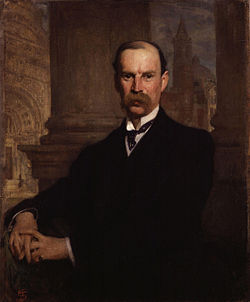| Government Buildings | |
|---|---|
Tithe an Rialtais | |
 Main façade of Government Buildings | |
| General information | |
| Architectural style | Edwardian Baroque, neoclassical |
| Location | Merrion Street, Dublin, Ireland |
| Coordinates | 53°20′21″N6°15′13″W / 53.339167°N 6.253611°W |
| Current tenants | Department of the Taoiseach, Office of the Attorney General, Department of Finance, Cabinet Office, Department of Public Expenditure, Infrastructure, Public Service Reform and Digitalisation, |
| Construction started | 1904 |
| Completed | 1922 |
| Inaugurated | 1911 |
| Renovated | 1989–1990 |
| Cost | £225,000 pounds sterling (1904 est.) |
| Renovation cost | £17.4 million Irish pounds (1990) |
| Owner | Government of Ireland |
| Technical details | |
| Material | Portland stone faced and Wicklow granite |
| Design and construction | |
| Architect | Sir Aston Webb |
| Main contractor | McLaughlin & Harvey Ltd |
| Renovating team | |
| Architect | Office of Public Works |
| Renovating firm | Pierse Contracting |
| Awards and prizes | RIAI Silver Medal for Conservation (1987–92) |
Government Buildings (Irish : Tithe an Rialtais) is a large Edwardian building enclosing a quadrangle on Merrion Street in Dublin, Ireland, in which several key offices of the Government of Ireland are located. Among the offices of State located in the building are:



